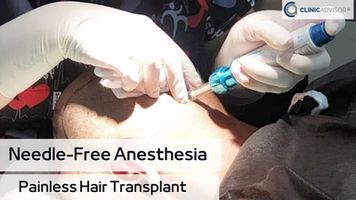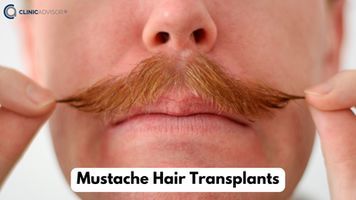What is the recipient site?
In the field of hair transplant, the recipient site refers to the areas where hair grafts will be transplanted to restore the lost hair and cover the balding areas.
This means that the recipient area can be the frontal parts of the scalp, the mid-scalp, or the crown area (vertex) and even some facial parts like the beard, sideburns or the eyebrows.
These regions are prone to hair loss unlike the donor site (back of the head) where the hair remains intact and is not affected by male pattern baldness.
How are recipient sites made?
Making incisions in the recipient area or in other words the channel opening is one of the most important and critical steps.
This stage of hair transplantation – if done correctly – will ensure successful and natural results.
Creating recipient sites (incisions) requires a high level of artistry and know-how on the special patterns of the hair growth angles. For instance, the hair growth pattern at the vertex (crown) region follows a spiral pattern.
A hair transplant specialist must also have knowledge of the characteristics of the hair follicles including the texture, color, and curl type as well.
There are various tools and methods to open the channels or create the recipient sites. Different doctors will use different methods that include using blades like steel or sapphire blades.
Steel blades are mostly used in the classic FUE method while sapphire blades are used in the Sapphire FUE method.
Others will prefer using hollow needle implanter pens. This technique is known as the DHI (Choi Implanter Pens).
You can read more about the channel opening and graft implantation techniques in this article.
How many recipient sites are created?
What determines the number of sites or incisions that will be created on the scalp or the face is actually the level of baldness and the number of harvested grafts.
For small areas such as patchy spots on the beard or the eyebrows 250-500 hair grafts are transplanted in most cases. Whereas bigger areas will require a bigger number of grafts between 1000-4000 hair grafts.
 The recipient area right after the hair transplant
The recipient area right after the hair transplant
Things to be taken into consideration when creating the recipient sites
When a hair transplant specialist or doctor creates the incisions in the recipient sites, they must take some points into consideration which include:
- The natural flow and the angle of hair growth will guarantee a natural appearance, especially on the hairline.
- The depth at which the incisions will be made is very critical. Too deep or too shallow incisions could prevent the hair grafts from taking root.
- The channels must be opened very carefully to reduce the risk of damage to the scalp blood vessels.
- The incision size should mimic the size of the hair grafts so as to allow a snug fit of the grafts.
How will the recipient sites look after a hair transplant?
After the hair transplantation procedure is completed the recipient sites will look slightly red. On the second day, the blood clots around the micro-wounds will dry up.
 Recipient area after first hair wash - Image by Avrupa Hair Transplant Clinic
Recipient area after first hair wash - Image by Avrupa Hair Transplant Clinic
After a week scabs (crusts) will appear on the transplanted areas. The scabbing on the recipient sites are very normal and it’s a way of wound healing.
These scabs will fall out on their own by properly washing your recipient sites.
Sometimes it’s also possible for patients to have some flaky skin and feel dryness in the recipient area even after 2 weeks.
In such a case it’s better to consult your doctor to advise you on the best way to moisturize the area and get rid of the flaky layers.
Redness in the recipient area after hair transplant
After a hair transplant patients notice some redness in the recipient areas. This is simply an inflammation as a way of healing after the surgery especially since the recipient site has received thousands of micro wounds.
The redness will normally disappear within 2 weeks. However, in some patients especially those with lighter skin it can take up to a month for it to completely go away.
Numbness of recipient area after hair transplant
Some patients report that they feel as if their recipient area is numb after a hair transplant.
Numbness is one of the expected side effects after a hair transplant that shouldn’t be a cause of stress.
You can read more about numbness after a hair transplant in this article.
Pain in recipient area after hair transplant
Feeling some pain in the recipient area after a hair transplant is expected. Once the anesthesia wears off patients can feel some slight pain which can be controlled with a painkiller.
The level at which people experience pain is different from one person to another. While some people only feel pain for the first two days others may have it for a couple of weeks.
The best thing is to speak with your doctors to prescribe the best medication to manage the pain better.
Do you have to shave the recipient area hair transplant?
A hair transplant has always been done by completely shaving the hair for more precision and better results.
However, due to the increasing demand by patients who don’t want to shave their hair, many hair transplant experts now offer hair transplant without shaving the recipient area.
That is to say that only the areas suffering from baldness or hair thinning will not be shaved while shaving the donor area is a must.
At some clinics, a long hair transplant option is offered to patients by which the donor area is not shaved.
When can I touch the recipient area after transplant?
Touching or rubbing the recipient areas after a hair transplant is one of the big don’ts after the surgery.
The hair grafts normally take 2 weeks to be fully anchored under the skin. Touching these grafts will put them at risk of being dislodged.
That’s why it’s highly recommended to avoid touching or rubbing the newly transplanted hair after a hair transplant.









Share Your Opinion, Please